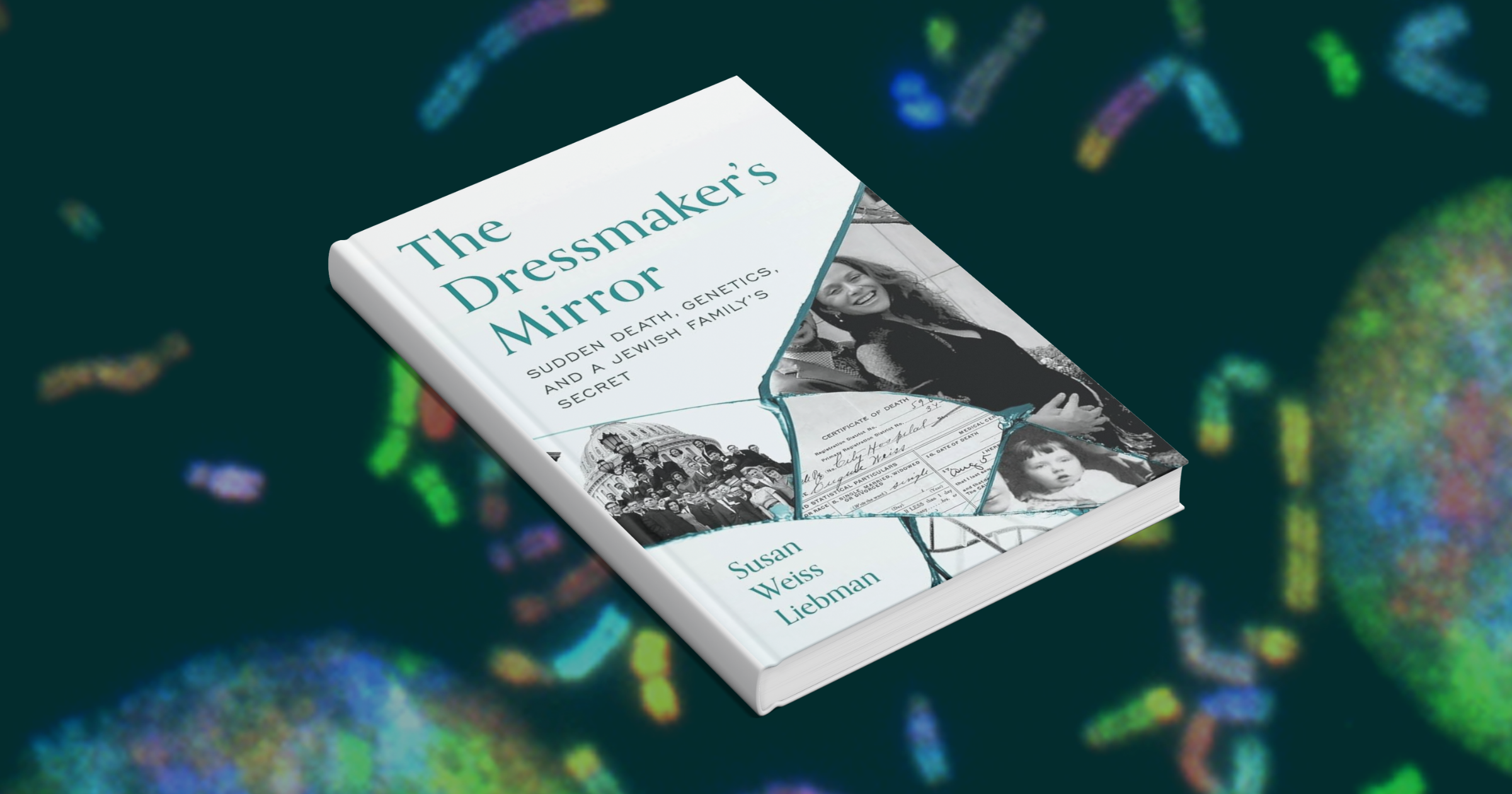Books
REVIEW: Genetic Secrets in ‘The Dressmaker’s Mirror’
The Dressmaker’s Mirror: Sudden Death, Genetics, and a Jewish Family’s Secret
By Dr. Susan Weiss Liebman (Rowman & Littlefield)
Long before his co-discovery of DNA, molecular biologist and geneticist James Watson made an assertion that stands up today. “We used to think that our fate was in our stars,” he said. “But now we know that in large measure, our fate is in our genes.” Indeed, hardly a day goes by without the announcement of a new discovery connected to our genes that can profoundly affect the way we live.
In her part-memoir, part-medical investigation The Dressmaker’s Mirror, Susan Weiss Liebman, a geneticist and former biology professor at the University of Illinois Chicago, describes how she made a discovery that gave her the key to unlocking a genetic mystery within her own family. The story begins after the sudden 2008 death of her pregnant 36-year-old niece, Karen Rothman Fried, when Liebman began investigating the tragic deaths that had haunted her Jewish family through the generations.
Liebman takes readers back to 1916 and the death of her 4-year-old uncle, Eugene Weiss, allegedly killed when a massive standing mirror fell on him. Liebman had first learned of her uncle after discovering a picture of the boy when she herself was 6. Asking about the picture, she writes that her father simply replied: “That’s my brother…. His name was Eugene…. I didn’t know this brother because he died before I was born.”
As an adult on the hunt for her own genetic background, Liebman searched through family documents, including Eugene’s death certificate, and made a surprising discovery: Eugene had succumbed to congestive heart failure following a five-day hospital stay.
Yet her grandmother and grandfather had claimed there was another cause of death—the large mirror that her grandmother, a gifted seamstress, used as part of her business designing dresses in the family home.
She also found out that her family had lived in Carbondale, Pa., at the time of Eugene’s death, and that his hospitalization was widely reported in the local news. Indeed, her grandparents, insistent on hiding their son’s death, decided to move to Scranton, about 20 miles southwest of Carbondale, after Eugene died.
In the book, she goes even further back in time, tracing her family’s start in the United States. In order to escape the wave of pogroms, her paternal great-grandfather had emigrated with his family from Kharkov, the second-largest city in the Ukraine, in 1906. The family settled in Pennsylvania and shortened their last name from Weissman to Weiss. Meanwhile, her maternal grandfather had left the hardships and antisemitism of Czarist Russia for New York City, where he became a successful dentist.
After Liebman’s parents married, they moved to Brooklyn. The author shares fond details about growing up there in the 1950s and 1960s. (She does, however, mistake a detail or two—placing Luchow’s, the notable Manhattan German restaurant, in Brooklyn, for example.)
Liebman moves into the modern era as she investigates her niece’s death. On the 28-year yahrzeit of Liebman’s father, who died of a heart attack, Fried, newly married and pregnant with her first child, suddenly collapses and dies while dining out with her husband. Her autopsy indicated no foul play and no aneurysm.
However, further study of Fried’s heart, requested by the New York City coroner, revealed that she had died from dilated cardiomyopathy (DCM), essentially an enlarged and weakened heart.
The second half of the book picks up speed. Upon obtaining the autopsy report, Liebman discovers that not only was Fried’s enlarged heart caused by a genetic mutation, but that Diane Rothman, Fried’s mother and Liebman’s older sister, had transmitted the deadly gene to her daughter.
“A mutation that could attack and kill members of my family at any time seemed to be on the loose,” Liebman writes, “so I decided to hunt down the killer before more of us were picked off in God’s cruel game of Russian Roulette. My sister was an enthusiastic partner in this search. We were both desperate to protect our children and grandchildren.”
In 2016, after the death of her sister, Diane, from complications of DCM, and with the help of researchers and genetic cardiologists, Leibman was finally able to identify the culprit that caused so much pain to her family for generations—the 3791-1G>C mutation in the FLNC gene, which is associated with a higher risk of heart defects among Ashkenazi Jews.
The mutation is present in about 1 in 800 Ashkenazi Jews, but not in any other ethnic group. Such ethnic specificity and high frequency indicate that the mutation proliferated over hundreds of years in an insular, intramarried community.
Her journey of discovery has made Liebman a fierce proponent of genetic screening, which assesses an individual’s risk of developing or passing along a genetic condition as well as genetic testing, which identifies specific mutations and is typically used once an individual has symptoms of a genetic disease.
Liebman also writes about the possible implications of broad-based genetic screening without a family history—from concerns about the dearth of clinical resources to questions about employment discrimination and denial of life insurance. On the positive side, genetic counseling is relatively inexpensive, and the knowledge gained by screening could help medical professionals prescribe preventive actions or make earlier diagnoses—which, she believes, could have prevented her niece’s sudden death.
“I believe I became a geneticist, at a time when few women pursued this path, because I was destined to help understand the family illness and advocate for genetic screening,” the scientist and bereaved aunt and sister writes in her preface.
As Liebman suggests, genetic screening and appropriate, effective medical intervention can change our fates.
Stewart Kampel was a longtime editor at The New York Times.











 Facebook
Facebook Instagram
Instagram Twitter
Twitter
Leave a Reply